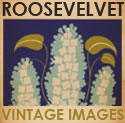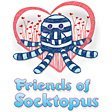fine reads: one hundred is a family
 Thursday, March 7, 2013 at 9:36PM
Thursday, March 7, 2013 at 9:36PM One Hundred Is A Family, by Pam Muñoz Ryan and illustrated by Benrei Huang is, on its face, a book about counting set to rhyme: both popular subjects with my three year old. Its underlying themes, however, are ones of diversity, community and stewardship of the earth; the families represented are multigenerational, chosen, single-parent, in some cases ambiguously gendered and -- most importantly -- all happy to be hanging out together.
Beginning with a single child ("one, finding a place to call home") and counting through ten, then by tens to one hundred, each number represents a different concept of family, from two women and a young girl stargazing to a farmful of workers bringing in the harvest. In the final pages, one hundred people tend the earth to make it better for the child pictured at the book's start. My preschooler quickly seized on this idea and turned back to the beginning to look at the kid, pointing out that all one hundred people were "his family, and the earth's family, too."
Huang's cheerful watercolored characters aren't overly stylized or arty, and are shown planting a garden, eating around a big table, hiking, and (most exciting, for me) co-sleeping four to a bed (without mention of poverty or implied pity - imagine that!), among other fun, often festive activities. A Chinese New Year celebration illustrates number seven ("a family keeping traditions of the past") and this sparked a neat bedtime conversation about the lanterns and dragon, and the similarities to American New Year's celebrations.
As the numbers climb higher, the concept of family gets broader, including a school posing for a portrait and a neighborhood gathered for winter caroling. Muñoz Ryan's approach here is admirable. Where many children's books over-explain, One Hundred Is A Family assumes you can hang with the relative subtlety of families of origin shown next to communities, and see the importance of both. My three year old, who regularly calls his preschool classmates his brothers and sisters, was certainly able to buy in to the idea, and I'm sure others like him, with a large extended chosen family would be able to do the same.
No time was given in this book to defining characters' gender, and while some of the people present more typically, with 1990s side ponytails or skirts, there are plenty of folks with no obvious gender, leaving the door to interpretation wide open. My son identified two families as having two mamas (one of which was the co-sleeping cuties at left), and a few of the baseball cap-clad kids as girls though they were indistinguishable to me from the ones he identified as boys.
Several races and ethnicities make appearances, here, with no tokenism or heavy-handed approach to diversity. The feeling is truly one of inclusion, not for its own sake, but because it fits the story.
Overall, we found One Hundred Is A Family refreshing, fun and inspirational. With the tie-in to caring for the earth, it's a timely choice for our garden-loving crew as we prepare for spring, and a relatable read for my littles, with chosen families as cherished as the ones they were born into.
Ratings:
KIDS' GENDER NEUTRALITY: *****
Five stars for some skirts, some headbands, but plenty (and I do mean plenty) of kids in neutral colors with no gender signifiers and nothing to tell you how anyone identifies. Nary a gendered pronoun in sight.
FAMILY SITUATIONS: *****
Five stars for happy families doing things like eating a meal around a big table and sleeping four to a bed. Lots of babies as active participants and older folks as relevant and fun. Characters' neutrality means pretty much any familial configuration can find representation.
MULTICULTURALISM: *****
Five stars for people of different races and ethnicities depicted hanging out, doing stuff with their loved ones rather than exemplifying stereotypes. Traditions are respectfully hinted at, as in the picture of a Black family stitching together a quilt, but don't overpower the more powerful message of togetherness.
GENTLE PARENTING: ****
Four stars for co-sleeping and family members of all ages working together harmoniously. Big people looking lovingly at littles, and the implication of mutual respect.
STORY AND ILLUSTRATION QUALITY: ***
Three stars for a somewhat dated illustration style I don't personally love, but my son found fun and accessible if not wow-inducing. A well worn rhyming scheme perfect for toddlers and preschoolers, with a beautiful overarching message and simple text appropriate for young listeners and readers.
OUR FAMILY'S OVERALL RATING: ****
Four stars. A sweet, uplifting and inclusive book I didn't mind re-reading when asked, which gave us the opportunity to talk about our different families and communities, and what other families look like. No problematic gender stereotypes, ageism or scary stuff to turn off my sensitive son. Cartoony but well-done illustrations that appeal to preschoolers. A fine read indeed! Check it out at your library or buy it at Powell's or Amazon.
As a closing note: So many people have offered their suggestions for Fine Reads, and each book mentioned is added to my reading list. Thank you, all, for the ideas about subject matter, authors and books you've loved sharing with your own kids, or remember enjoying as children yourselves. Most of what's recommended to me are books that deal directly with same sex parents, boys that wear dresses, and the like. While these are great, I wanted to clarify that they aren't my focus. I know that I could walk into a library and ask the librarian for a book about having two moms, for example, but a child with two moms doesn't need to learn about that phenomenon. Instead, I'm trying to find books that simply show diversity, different families, gender de-emphasis, and differing abilities as truths that fade into the background of an otherwise-angled story. I think this might make my small efforts a more universal resource, and I hope that the open-endedness of the books I choose leaves more room for self-directed thought and discussion by young readers and their big people. That said, keep those rec's coming!
 books,
books,  diversity,
diversity,  families,
families,  inclusion,
inclusion,  picture books,
picture books,  preschooler,
preschooler,  young readers in
young readers in  fine reads
fine reads 


